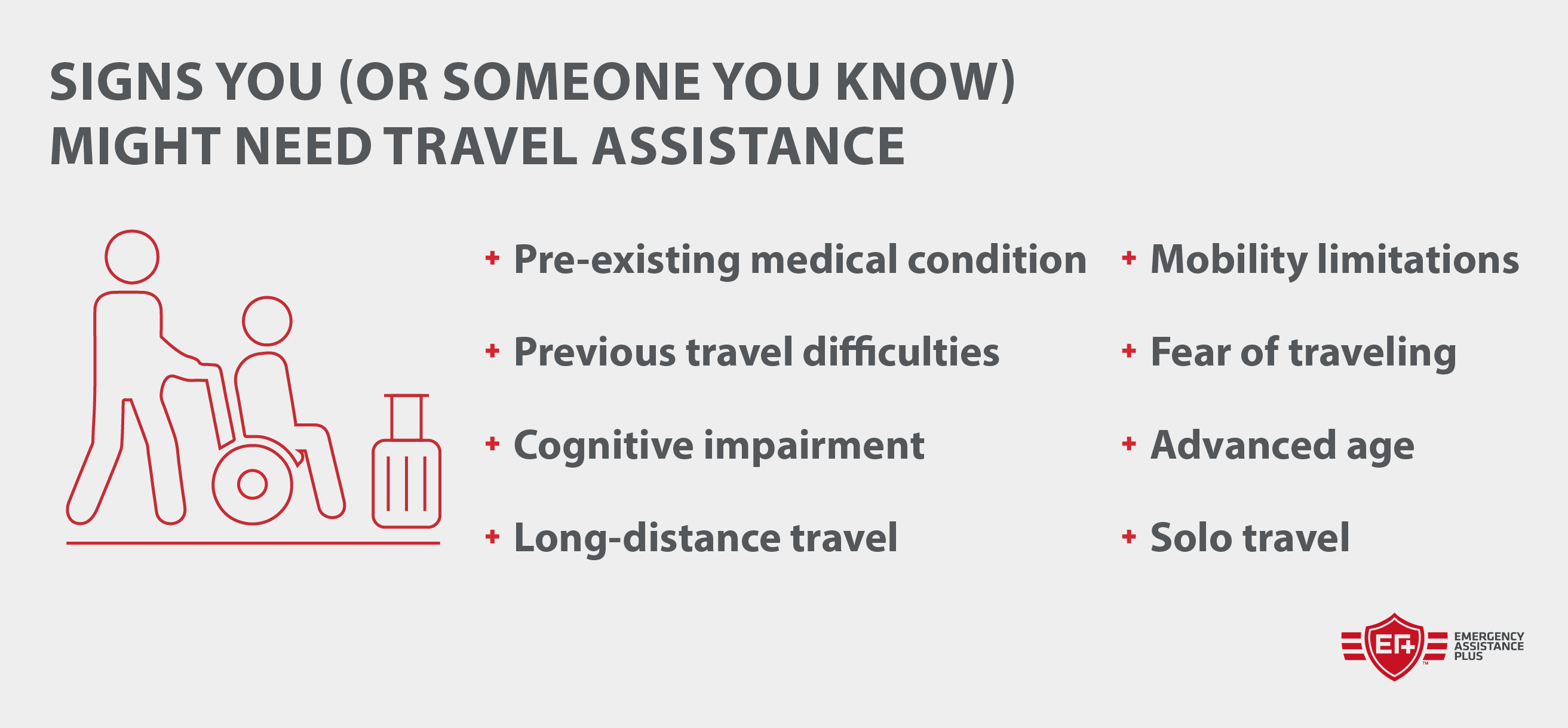Assisted travel for elderly individuals is a growing sector, addressing the unique needs of senior citizens who wish to explore the world. This guide delves into the various modes of assisted travel, from private car services and specialized tour operators to accessible public transportation, weighing the advantages and disadvantages of each. We’ll explore accessibility features crucial for elderly travelers with varying needs, providing practical tips for planning, booking, and ensuring a safe and enjoyable journey.
Beyond logistics, we examine the emotional and psychological aspects of travel for seniors, offering strategies to enhance their experience and reduce stress. Financial considerations, including cost breakdowns and potential assistance programs, are also addressed, ensuring a holistic approach to planning seamless and fulfilling trips for the elderly.
Accessibility Features in Travel: Assisted Travel For Elderly
Accessible travel is paramount for elderly individuals, ensuring comfortable and safe journeys regardless of their specific needs. This necessitates a comprehensive approach encompassing various accessibility features designed to cater to diverse mobility levels and sensory requirements. Failure to provide adequate accessibility can severely limit travel opportunities for a significant portion of the population.Accessibility features are crucial for ensuring elderly travelers can navigate travel environments with ease and independence.
These features are not merely conveniences; they are essential for promoting inclusion and ensuring safe and dignified travel experiences. The lack of appropriate accessibility can lead to exclusion, frustration, and even safety hazards.
Accessible Transportation and Infrastructure
Accessible transportation infrastructure plays a pivotal role in enabling elderly travelers to move freely and safely. This includes readily available ramps, elevators, and clearly marked signage in airports, train stations, and bus terminals. Well-maintained and easily accessible restrooms are also essential, addressing a common need for this demographic. Furthermore, adequate seating throughout travel environments is critical for those with mobility limitations or fatigue.
The provision of audio announcements and visual aids, such as large print signage and tactile paving, further enhances accessibility for individuals with visual or auditory impairments. For example, many modern airports now feature automated boarding bridges that minimize the need for extensive walking and navigating steps, directly improving the travel experience for elderly individuals.
Innovative Accessibility Solutions
Several innovative accessibility solutions are transforming the travel experience for elderly individuals. These advancements aim to reduce barriers and improve overall convenience and safety.
- Smart wheelchairs and mobility aids: These advanced devices offer features like GPS navigation, automated obstacle avoidance, and remote monitoring capabilities, providing greater independence and safety for users.
- Augmented reality (AR) navigation apps: These apps overlay digital information onto the real world, providing real-time guidance and information about accessible routes and facilities, aiding those with cognitive or visual impairments.
- Accessible hotel room designs: Many hotels are adopting universal design principles, including roll-in showers, adjustable height beds, and grab bars, catering to a wide range of needs and disabilities.
- Sensory-friendly spaces in airports and attractions: Designated quiet areas and sensory rooms are being introduced to provide respite for individuals who may be overwhelmed by noise or crowds.
Importance of Accessible Restrooms, Ramps, Elevators, and Signage
Accessible restrooms, ramps, elevators, and clearly marked signage are fundamental aspects of accessible travel infrastructure. Accessible restrooms should feature sufficient space for wheelchairs and mobility aids, grab bars, and appropriately sized fixtures. Ramps with gentle slopes and non-slip surfaces are essential for wheelchair users and those with mobility limitations. Elevators should be spacious enough to accommodate wheelchairs and have clear controls and audible announcements.
Clearly marked signage, using large, high-contrast fonts and symbols, is crucial for all travelers, especially those with visual impairments or cognitive difficulties. For instance, a hotel that lacks a ramp to the main entrance immediately creates a significant barrier for elderly guests using wheelchairs. Similarly, poorly marked restrooms can lead to confusion and inconvenience for those with cognitive impairments.
Planning and Booking Assisted Travel

Planning a trip for an elderly loved one requires meticulous attention to detail, ensuring their comfort, safety, and well-being are prioritized throughout the journey. This involves careful consideration of their specific needs, medical requirements, and preferences to create a seamless and enjoyable travel experience. Failing to adequately plan can lead to unexpected challenges and potentially compromise the overall trip.
Step-by-Step Guide to Planning Assisted Travel
Begin by thoroughly assessing the elderly person’s physical and cognitive abilities, medical conditions, and any necessary medications. This crucial first step informs all subsequent decisions. Next, determine the desired destination and length of stay, considering factors like climate and accessibility. Research potential destinations and accommodation options, focusing on features that cater to the individual’s needs. Then, create a detailed itinerary, including planned activities and travel times, allowing for ample rest and flexibility.
Finally, book flights, accommodation, and transportation well in advance, confirming accessibility features and making necessary arrangements for assistance at airports and other transportation hubs. Regular communication with the traveler is essential throughout the planning process.
Remember to click adventures for seniors to understand more comprehensive aspects of the adventures for seniors topic.
Booking Accessible Accommodations and Transportation, Assisted travel for elderly
When booking accommodations, explicitly state the need for accessible facilities. Verify the availability of features such as ramps, grab bars, wider doorways, roll-in showers, and accessible bathroom fixtures. Contact the hotel or accommodation provider directly to confirm the specifics and request visual confirmation of accessibility features, if possible. Similarly, when booking flights or other forms of transportation, inform the provider about the need for assistance and any specific requirements, such as wheelchair assistance or special seating arrangements.
Many airlines and transportation companies offer dedicated assistance services for passengers with disabilities. Confirm these services in writing and obtain reference numbers for tracking purposes. For example, contacting the airline directly to request a wheelchair for the duration of the journey and confirming its availability at both departure and arrival airports is vital.
Essential Documents and Packing Checklist
A comprehensive checklist is essential to ensure a smooth journey. This should include copies of medical records, including diagnoses, medications, allergies, and emergency contact information. Pack sufficient medication, with copies of prescriptions, and consider carrying a doctor’s note outlining medical needs and any necessary accommodations. Include travel insurance documentation and confirmation numbers for flights, accommodations, and transportation.
Don’t forget essential personal items such as comfortable clothing, mobility aids (canes, walkers, wheelchairs), any assistive devices, and a well-stocked first-aid kit. A detailed itinerary and emergency contact information should also be readily accessible. Consider packing a small, portable oxygen concentrator if needed, after verifying airline regulations. For international travel, ensure all necessary visas and passports are up-to-date and readily available.
Safety and Security Considerations
Safe and secure travel is paramount for elderly individuals, requiring careful planning and consideration of potential risks. This section details potential hazards and preventative strategies, along with examples of safety features offered by assisted travel providers. Understanding these aspects ensures a smoother and more worry-free journey.
Potential Safety Risks and Preventative Measures
Elderly travelers face unique safety challenges. Falls are a significant concern, exacerbated by mobility issues and potential medication side effects. Cognitive impairment can lead to disorientation and vulnerability to scams or accidents. Pre-existing health conditions may require special attention, and the unfamiliar environment of travel can increase stress levels. Preventative measures include thorough pre-trip medical checkups, packing appropriate medications and medical information, selecting accessible accommodations and transportation, and familiarizing oneself with the destination beforehand.
Travel insurance covering medical emergencies and trip cancellations is crucial. Consider using GPS trackers or personal emergency response systems (PERS) for added security. Travel companions, if possible, provide an extra layer of support and assistance.
Managing Potential Health Emergencies During Travel
Health emergencies can occur unexpectedly. A comprehensive travel insurance plan covering medical evacuation and repatriation is essential. Carrying a detailed medical history, including a list of medications, allergies, and emergency contacts, is vital. Familiarize yourself with the location of nearby hospitals and medical facilities at your destination. Inform your travel companions or family members of your itinerary and contact information.
Pack a well-stocked first-aid kit containing essential medications and supplies. In case of an emergency, immediately contact your travel insurance provider or local emergency services.
Safety and Security Features Offered by Assisted Travel Providers
Several assisted travel providers offer specialized safety and security features. The following table highlights examples:
| Provider | Feature | Description | Cost |
|---|---|---|---|
| Example Provider A | 24/7 Emergency Assistance | Access to a dedicated support team available around the clock for assistance with medical emergencies, lost luggage, or other unforeseen issues. | Included in package price |
| Example Provider B | GPS Tracking Device | Provides real-time location tracking for peace of mind, allowing family or caregivers to monitor the traveler’s whereabouts. | $50 per trip |
| Example Provider C | Pre-arranged Medical Transportation | Guaranteed transportation to and from medical facilities in case of a health emergency. | Varies depending on location and needs |
| Example Provider D | Personalized Support Staff | Provides a dedicated support person to accompany the traveler throughout the trip, offering assistance with mobility, navigation, and other needs. | Starting at $1000 per week |
Cost and Financial Considerations
Planning assisted travel for elderly individuals requires careful consideration of the substantial financial implications. The overall cost can vary significantly depending on factors such as the traveler’s specific needs, the length of the trip, the chosen destination, and the level of assistance required. Understanding these costs upfront is crucial for effective budgeting and securing necessary financial resources.
Several key cost factors contribute to the overall expense of assisted travel. Transportation costs, including airfare, ground transportation (wheelchair-accessible taxis or private cars), and potential medical evacuation insurance, can be substantial. Accommodation choices also play a significant role, with accessible hotels or specialized facilities often commanding higher prices than standard options. Medical expenses, including pre-trip consultations, travel insurance covering medical emergencies, and potential on-site medical care, are another major consideration.
Finally, the cost of support services, such as personal care attendants, specialized equipment rental, and in-home assistance before and after the trip, can add significantly to the overall budget.
Financial Assistance Programs and Resources
Numerous financial assistance programs and resources can help alleviate the financial burden of assisted travel for elderly individuals. These programs often vary by location and eligibility criteria. Examples include government-sponsored programs for seniors with limited incomes, charitable organizations providing grants or subsidies for accessible travel, and private foundations dedicated to supporting travel for individuals with disabilities. Many travel insurance providers offer specialized policies that cover medical emergencies and other unforeseen circumstances.
Exploring these options thoroughly is vital for securing potential financial aid. For instance, some Medicare Advantage plans offer supplemental coverage for certain travel-related medical expenses, while Medicaid may provide assistance with transportation costs for those who qualify.
Comparison of Assisted Travel Options
The cost of assisted travel can vary significantly depending on the chosen options. The following table compares three common options: independent travel with accessible accommodations, group assisted travel tours, and private assisted travel arrangements.
| Option | Cost Breakdown | Pros | Cons |
|---|---|---|---|
| Independent Travel with Accessible Accommodations | Flights, accessible hotel, accessible transportation (rental car, taxis), medical insurance, personal care items. Costs vary widely based on destination and length of stay. Expect a higher cost for accessible rooms and transportation. | Greater flexibility and control over itinerary. | Requires more planning and self-sufficiency. Potential for higher overall cost due to individual booking of services. |
| Group Assisted Travel Tours | Tour package price (includes transportation, accommodation, some meals, and guided excursions). May include some assistance but additional support may need to be arranged separately. | Generally more affordable than independent travel, provides companionship, and includes organized activities. | Less flexibility in itinerary, may not cater to all specific needs, and may require sharing accommodations. |
| Private Assisted Travel Arrangements | Flights, private accessible transportation, specialized accommodation, 24/7 personal care attendant, medical insurance, customized itinerary. This option will be the most expensive. | Highest level of personalized care and support, maximum flexibility, and tailored itinerary. | Significantly higher cost compared to other options. Requires extensive planning and coordination. |
Planning assisted travel for elderly loved ones requires careful consideration of various factors, from accessibility and safety to emotional well-being and financial resources. By understanding the available options, preparing meticulously, and prioritizing the individual’s specific needs, families can ensure a memorable and enriching travel experience for their senior citizens. This guide serves as a starting point for a journey filled with discovery and joy, proving that age is no barrier to exploration.


